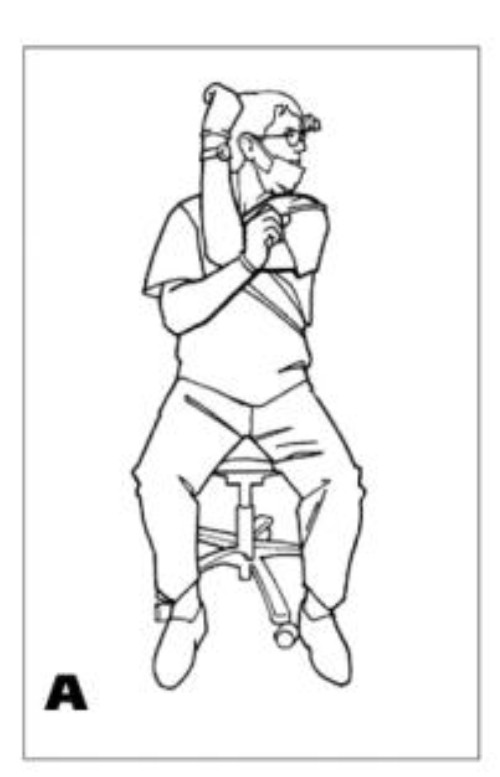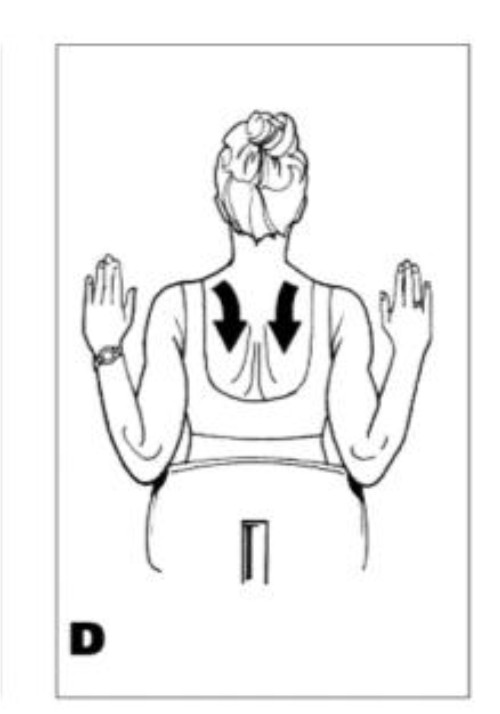Repetitive strain injuries are on a rise in dentistry. The positions in which dentists repeatedly put themselves through their work, place them at great risk for developing musculoskeletal disorders. Majority of dentists and dental hygienists experience some type of musculoskeletal pain in their shoulders and neck, hand and wrists, lower back, forearms and elbows. These problems decrease work performance, job satisfaction and affect their professional careers. Very little attention is given on impact of dental work on development of nerve and muscle pathologies. To protect their own health, dentists should seek out and receive education about musculoskeletal health, and injury prevention during work. The purpose of this article is to discuss various postural strategies and stretching and strengthening techniques during breaks to ensure long term comfort, efficiency and ease in dental practice.
The Importance Of Posture
Proper posture is important to perform work effectively and avoid chronic injury during work. Some improper postures that are taken by dentists are working with neck tilted to one side, elevated shoulders, excessive twisting, too much forward bending and working in same position for more than half an hour. These positions put pressure on nerves and vessels, cause excessive strain on muscles, and cause wear and tear on the joint structures. So working with good posture is very important.
Tips For Working With Good Posture1
1. One must work close to his/ her body. The dentist's chair must be positioned close to the patient to minimize forward bending thus reducing stress on the back, shoulders and arms.
2. Always try to maintain erect posture with feet flat on the floor.
3. Alternate work positions between sitting, standing and side of the patient. This allows certain muscles to relax while shifting stress onto other muscles and increasing circulation.
4. Height of dentist's chair and patient's chair should be adjusted to a comfortable level. If the dentist's chair is too low and patient's chair is too high, it causes the dentist to raise his shoulders and leads to neck problems and pinched nerves. If the position is other way round excessive bending of neck and wrists leads to neck and wrist problems.
5. Light adjustment should be proper so that one does not have to strain his neck to see inside the patient's mouth.
6. If the chair can be adjusted into a horizontal reclining position, it allows the dentist to work in a more comfortable posture. Generally patients should be placed in a semi supine position for mandibular procedures and a supine position for maxillary procedures.
7. The work place should not be too cold because this will decrease circulation and blood flow to the extrimities aggrevating the previously existing problems.
Certain Exercises That Can Be Performed During Short Breaks2
Longer work periods without breaks can lead to musculoskeletal disorders. Quick stretch exercises can be performed in and out of operatory and can be incorporated into daily routine that facilitates balanced musculoskeletal health. These exercises can be performed easily while anesthesia is taking effect or while wearing gloves .Some such exercises are as follows.
A. Neck and shoulder combination - With the elbow at shoulder height and at 90O angle, gently pull the arm across the front of the body with opposite arm. Look over the shoulder being stretched and hold for two to four breathing cycles. Repeat with the other side.
B. The untwister - with the knees wider than the shoulder width, bend to the left side, resting full body weight through the left elbows on the left knee. Stretch the right arm overhead and look towards the ceiling. Hold for two or four breath cycles. Repeat on the other side.
C. Upper trapezius stretch- anchor the right hand behind the seat of the operator chair, gently bring the left ear towards the left armpit. Hold for a two to four breathing cycles. Repeat on other side.
D. Downward squeeze- assume a neutral head posture(ears over the shoulders) do not let the head move forward throughout the exercise. Lift the chest upwards, position the arms at sides with fingers pointing upwards and palms facing forwards. Roll the shoulders back and down squeezing the shoulder blades downward and together. Hold for long breathing Cycle. Repeat five times.
 |
 |
 |
 |
 |
 |
 |
 |
Safety Tips During Streches2
To avoid injury, following points must be kept in mind:
Avoid stretches in painful range and discontinue stretching if it increases pain.
Perform stretches in both directions.
Hold the stretches to 2-4 breathing cycles.
Slowly release the stretch and return to a neutral zone.
Begin the exercises gradually, starting with minimum number of repetitions.
In addition, aerobic exercises should be performed 3-4 times a week for atleast twenty minutes. Various stress management techniques like breathing techniques, massage, meditation or yoga can be practiced at home.
Conclusion
Work related pain is common among dental professionals. This problem can be managed by using a multi factorial approach that includes preventive education, postural and positioning strategies, proper selection and use of ergonomic equipment and frequent breaks with stretching and postural strengthening techniques. It is important that dentist incorporate these strategies into practice to facilitate musculoskeletal health that will enable longer, healthier careers; increase productivity, provide safer workplace and prevent musculoskeletal disorders
Refrences
1. Graham Colin . Ergonomics in dentistry ; 2002 .
2. Valachi Bethany, Valachi Keith . Preventing musculoskeletal disorders in clinical dentistry. J Am Dent.asoc . 2003 ; 134 : 1604 -1612. |